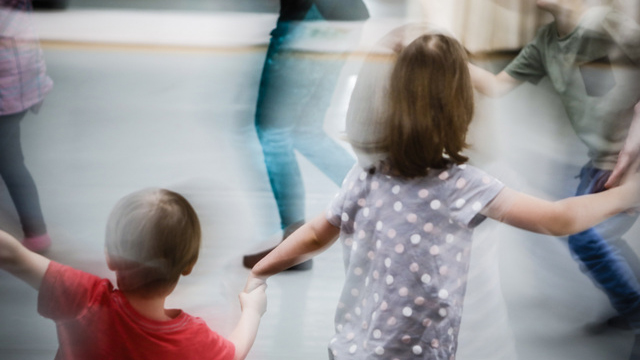“Learning with the whole body” – Malax brings the performing arts into schools with impressive results
Uniarts Helsinki’s Theatre Academy is currently coordinating an arts education project that explores what happens when teaching in the performing arts is integrated into comprehensive schools and pre-schools. The experiment will lead to a draft curriculum that includes the performing arts as a school subject, alongside visual arts and music.

A project is currently underway in the Swedish-speaking municipality of Malax in Ostrobothnia that has brought the performing arts – theatre, drama, dance, circus and literary art – to the regular curriculum of comprehensive schools and pre-schools. Teaching in the performing arts is integrated into other subjects and provided to pre-schoolers, 3rd–4th graders in primary school and 7–8th graders in lower secondary school for two school years, one hour per week.
According to previous studies, students have an interest in the performing arts, and the subject strengthens their understanding of art and culture. Furthermore, the methods used in the performing arts support students’ general learning skills, wellbeing at school and social skills. Professor of Dance Pedagogy Eeva Anttila, for example, has a long history in studying the connection between dance and learning at Uniarts Helsinki. According to Anttila, dance connects bodily experience and conceptual thinking, which deepens a person’s understanding of a new topic and helps them to internalise it.
The ongoing project in Malax confirms this observation.
“The results so far clearly show that the performing arts stimulate creativity, empathy, social skills and critical thinking. Kids are given the opportunity to explore both themselves and their environment, which strengthens their self-knowledge and inner motivation,” says Nina Dahl-Tallgren, who is a researcher at Uniarts Helsinki’s Theatre Academy with a doctoral degree in education.
The experiment in Malax is part of a research and development project called SMIL (Scenkonst med i lärande), which was launched in 2023. Dahl-Tallgren works as the project’s project manager and researcher.
Art helps in building a stronger sense of community and value base
What is it then that students learn in class thanks to this experiment? For example, students have worked on their self-knowledge, empathy and problem-solving through role-playing and drama while studying subjects according to the regular curriculum, such as mathematics, mother tongue or environmental studies.
Students have personally felt that introducing art into lessons has helped them learn new things.
“It’s like we are learning in a completely different way – with our whole body,” was the feedback one seventh-grade student shared about the new way of learning.
Dahl-Tallgren says that teachers, too, have given enthusiastic feedback. The trial period has opened teachers’ eyes to the benefits that performing arts methods can have in schools.
“I can see how the students are more daring, cooperate better and express themselves more freely,” says one of the teachers involved in the project.
“Having teaching in the performing arts not only increases creativity, but it is also beneficial to the students’ courage to be part of the community. Role-playing, movement, reflection and dialogue help children and young people develop an understanding of themselves and others. Performing arts can lend some tangibility to the core values of the school,” Dahl-Tallgren says.
Performing arts as a subject in its own right
The Malax experiment will be used to conduct research, produce teaching materials and develop teachers’ pedagogical skills in the performing arts. It will also lead to a curriculum proposal outlining what kind of role the performing arts could have alongside the current arts subjects – visual arts and music – offered in schools.
“Our long-term vision is that the performing arts would play a similar role in schools as music and visual arts already do. The performing arts offer unique tools to support the learning, wellbeing and social skills of children and young people. That is why they should be a self-evident part of the curriculum,” says Vice Dean of the Theatre Academy and University Lecturer Riku Saastamoinen, who leads the steering group of the SMIL project.
The project will not be limited to Ostrobothnia during the 2025–2026 academic year, as the teaching materials produced during the project will be tested out and used in other Swedish-speaking schools in Finland, too – on Åland and in Sipoo and Helsinki.
The SMIL project is coordinated by the Theatre Academy and funded by the SKAPA programme run by Svenska kulturfonden. Besides Uniarts Helsinki’s Theatre Academy and the municipality of Malax, the project involves Novia University of Applied Sciences, Children and Youth Foundation, Åbo Akademi University, Finnish National Agency for Education, University of Helsinki and the Futures Work in Comprehensive Schools project carried out by the Ministry of Education and Culture.
Read more about the SMIL project.
Visit the project blog to learn more (mostly in Swedish).